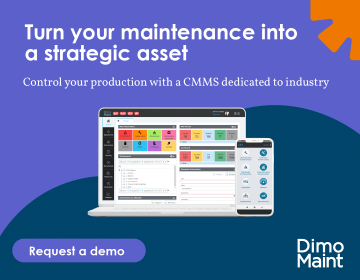What is autonomous maintenance, and how does it fit into Total Productive Maintenance?
Autonomous maintenance is one of the fundamental principles of Total Productive Maintenance (TPM). It represents a specific category within TPM and plays a pivotal role in its effectiveness.
Autonomous maintenance is broken down into several key steps:
- Inspection and Cleaning: Technicians are responsible for their equipment and commit to performing basic inspection and cleaning tasks. This helps identify common maintenance issues such as leaks, loose screws, or malfunctioning parts of the equipment.
- Basic Maintenance: Technicians are trained to carry out the aforementioned inspections and clean-ups. These routine operations allow them to become better acquainted with the equipment they use, thus ensuring optimal performance.
- Preventive Failure Detection: Technicians must remain vigilant for any early signs of failure. By detecting these signs early, larger damages can be averted.
- Standardization: Standardizing these actions ensures consistency in procedures, regardless of the operator performing the maintenance.
- Collaboration: Autonomous maintenance encourages teamwork. If a technician cannot perform a task, they contact the maintenance team for help.
Thanks to this approach, technicians develop autonomous skills for maintaining their equipment, which reinforces their sense of responsibility and pride.
What are the benefits of autonomous maintenance?
- Time and Resource Savings: By carrying out simple maintenance tasks, major unforeseen interventions can be avoided, saving time and reducing expenses.
- Increased Equipment Longevity: Regular equipment maintenance and monitoring of their efficiency extends their lifespan while reducing wear and tear and the risks of breakdowns.
- Improved Production Efficiency: Well-maintained equipment operates optimally, which is crucial for keeping production at its maximum level.
How to implement autonomous maintenance in TPM?
Implementation steps
Implementation begins with a commitment from management and maintenance technicians. It is imperative that management ensures technicians receive necessary training. It’s also essential that all departments are informed about the integration of autonomous maintenance.
The next phase involves conducting a thorough inspection and cleaning of all equipment. These inspections must be accurately documented, noting every detail about the state of the machines. One must also identify the causes of problems or inefficiencies, whether they be from accumulated dust or inadequate lubrication. After documenting and analyzing the equipment, these actions need to be standardized and made easy to follow.
Finally, it is important to define schedules for carrying out these autonomous maintenance tasks, by assigning a technician or team to each piece of equipment. The use of visual tools like color codes or checklists can simplify the technicians’ work.
Keys to success
All of this must be well documented, with constant feedback from management. Technician training should be ongoing, and TPM must become an integral part of the company culture.
CMMS plays a key role in the implementation of autonomous maintenance, especially in an industrial setting. CMMS allows the maintenance team to stay informed and prepared to carry out autonomous maintenance.
Autonomous maintenance is a vital contributor to TPM. It is necessary to persuade and motivate technicians to get involved in this culture, which promotes engagement and continuous improvement.


